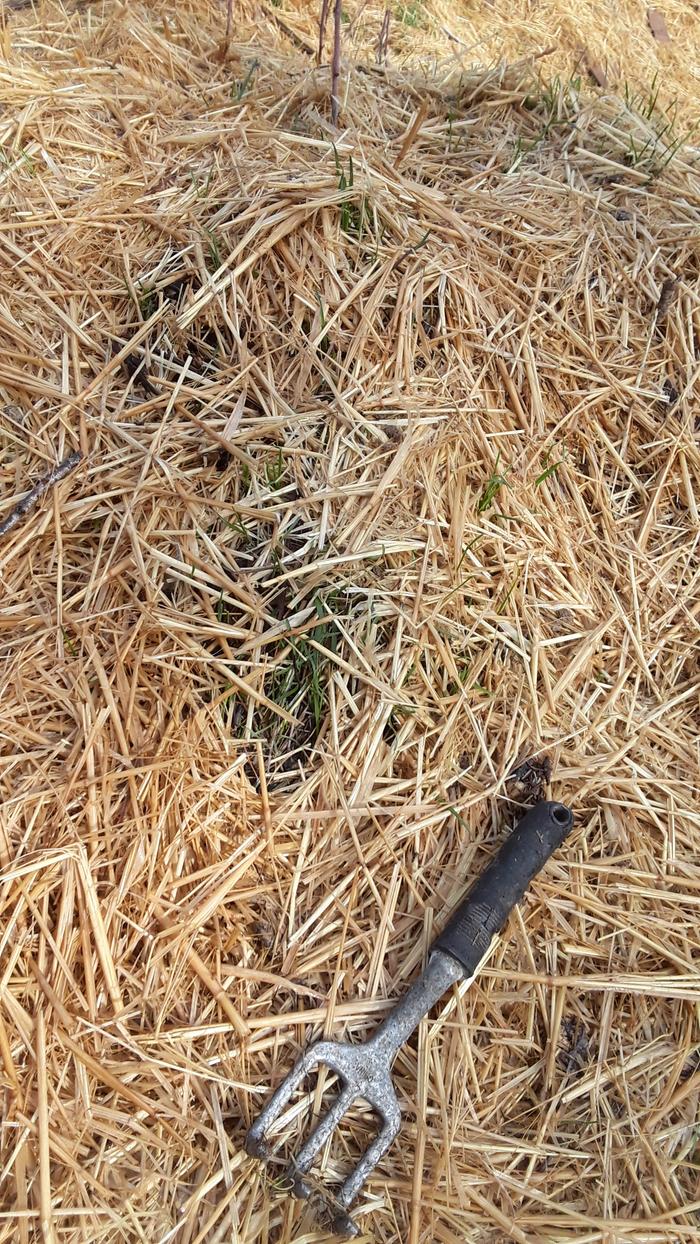posted 2 years ago
Thank you Mike those are some awesome hugels! They remind me of the cliffs behind my old home in Cali, which were sandstone, sand, monkeyflower, oak seedling, manzanita, and poison oak. We had chipmunks living under the roots of all the principle shrubs, it was very cute.
Here is my long overdue hugelupdate. The mice are actually some species of gophers, very intelligent and prolific. They eat 100% of the garlic and 95% of the girasole roots I plant so I moved those crops off the hugels. The one nice thing about the gophers is that bumblebees absolutely adore their tunnels and we have tons and tons of bumbles in the spring.
The tansy was not hard to remove, I don't know why because it is still terrorizing the rest of the yard, but after pulling it all it didn't really come back. Grass has remained the major problem. Grass with a thick thick matted sod network of roots that choke and exclude other plants. Cardboard caused a slug explosion and we are short on ducks so I swapped it out with straw, thicker and thicker applications, until I finally settled on 12" thick soaked rotted straw. The grass doesn't come up through that until the second year. Except yarrow, which grows through the straw eventually, I have to make little holes to plant anything. In areas where the straw has been down for a year, I can rip out the residual half-dead sod from under the rotted straw and make a little bed, sort of like a raised bed bordered in straw, that I fill in with compost and soil from elsewhere. I'm growing strawberries, garden sage, a couple of other herbs, and squash very successfully this way, but they all need lots of water, so maybe I'm not doing it right. The continuous gopher tunnels probably ruin a lot of the moisture. And we still don't have a trailer so I'm still not adding anything except chicken straw and compost.
Things growing themselves include: raspberries, black-cap raspberries, snowberry, wild roses, nettles, peppermint, speedwell, hollyhocks, thimbleberry, and pink spirea. The raspberries do so well that I'm ripping out a section and putting in improved berries this year. We have the wild-type and the berries are super tiny. I'm hoping the improved varieties do well, too.
The hugels do create a zone of moisture at their base where I have many perennial herbs planted that do not need a lot of water: lemon balm, hyssop, anise hyssop, catnip, iris, echinacea, lady's mantle, and columbines (not an herb though.) Another thing they do for the garden is to shelter the oval inset in the middle from the dust from the dirt road nearby, and they provide a little bit of privacy. I'm almost wishing the shorter hugel was a little higher now. And they give the garden panache, which is indispensible.
Upcoming plans, besides trying a new kind of raspberry, include putting some of the herbs in gopher cages, experimenting with CO poisoning, trying to rent a rat terrier, and replacing a few of the native shrubs and nettles with currants. I'm also watching for things that like drier conditions, and things gophers won't eat. Will try to post pictures this season.
"I think that I shall never see A poem as lovely as a tree." Joyce Kilmer

 5
5




 1
1




 5
5




 2
2




 3
3








 1
1





 2
2







 1
1







 4
4










